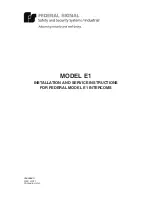
9
TDS Meter (Option)-- How to Test Your Water Quality
The TDS meter is used to test your water’s quality before and after the RO system. It also tells you when the
membrane needs to be changed.
Please follow instructions below:
Use 2 clean glasses, fill one glass with Tap water, fill the other glass with Product (filtered) water
(rinse this glass with filtered water several times to get an accurate reading). Remove the Sensor cap on the
TDS meter and rinse the meter sensor with filtered water several times, then Turn on the meter.
The meter will show “000” reading on its screen. Place the TDS meter into the Product water. Record
Product water’s TDS reading. Then do the same for the Tap water. Record the Tap water’s reading.
Compare the 2 readings.
The Product water’s TDS should be about 3%-10% of your Tap water’s TDS. This is a normal range.
For example:
Your Tap water’s TDS: 100 ppm
Your Product water’s TDS should read within: 10% of 100ppm => 10ppm
This means that with 100 ppm input, the RO system has removed 90% of the contaminants (TDS) from
the source, leaving only 10% (10 ppm) residual TDS in the Product water. This is a normal range. Which
means the RO membrane is in good condition.
If your Product water TDS reads less than 10%, that is a very good and normal reading.
You should test your water once or twice a year to monitor the membrane condition. As the membrane
gets depleted overtime, its rejection capacity will decrease. When this happens, the TDS in the Product
water will increase.
When your Product water TDS creeps up to 15%- 20% of input water’s TDS, it’s time to replace the membrane.


































